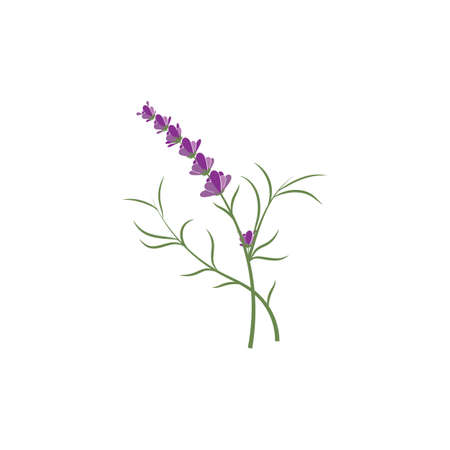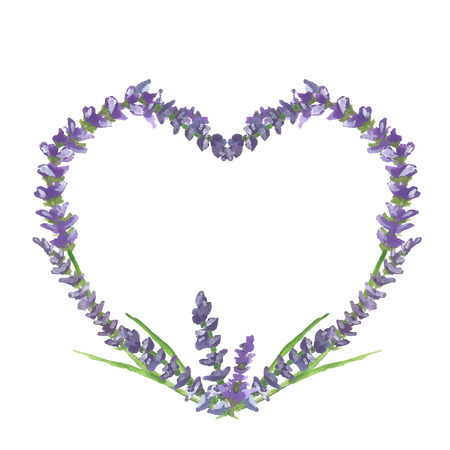Introduction to Lavender in British Culture
Lavender holds a special place in the heart of British culture, weaving together threads from history, horticulture, and daily tradition. Its distinctive scent and vibrant purple hues have long been cherished across the United Kingdom, with roots stretching back to medieval times. In classic English gardens, lavender lines pathways and borders, not only for its ornamental beauty but also for its practical uses—repelling pests and providing aromatic cuttings for the home. British literature frequently references lavender as a symbol of serenity and nostalgia, evoking images of rural landscapes and tranquil cottages. Beyond gardens and prose, lavender has found its way into everyday life: from scented sachets in linen cupboards to calming teas enjoyed before bed. This enduring presence highlights how deeply lavender is interwoven with the rhythms and rituals of British society, making it far more than just a botanical delight.
Traditional Uses of Lavender for Health and Wellbeing
Lavender has held a cherished place in British life for centuries, not merely as an ornamental plant but as a staple in the nation’s approach to health and wellbeing. In households across the UK, lavender has traditionally been valued for its versatility and soothing properties. From rural cottages to bustling city homes, its dried flowers were often sewn into sachets or tucked between linens to promote restful sleep and ward off moths. The gentle, calming scent was believed to encourage relaxation and maintain mental balance—a remedy passed down through generations.
In British folk medicine, lavender’s applications extended well beyond the bedroom. Infusions and tinctures made from its blossoms were commonly used to relieve headaches, ease digestive discomfort, and soothe minor burns or insect bites. Some families kept bottles of homemade lavender water at hand as an all-purpose tonic for skin irritations or stress-related complaints. Below is a summary of traditional uses found in British households:
Application |
Purpose |
Typical Method |
|---|---|---|
| Sachet in bedding | Promote sleep & relaxation | Place dried flowers under pillows or in drawers |
| Lavender water/tonic | Skin soothing & stress relief | Spritz on skin or use as bath additive |
| Herbal infusion/tea | Digestive comfort & headache relief | Brew dried flowers in hot water and sip slowly |
| Aromatherapy oils | Anxiety reduction & mood support | Add essential oil to diffuser or bath |
| Poultice/compress | Treat minor burns or bites | Apply soaked cloth with lavender infusion to affected area |
This embedded knowledge reflects how the British have long turned to natural remedies for everyday ailments, trusting in lavender’s gentle efficacy. While modern medicine now offers a broader array of options, these time-honoured practices endure as a testament to the enduring appeal—and local wisdom—of lavender in supporting both physical and mental wellness.

3. Scientific Insights: Lavender’s Healing Properties
In recent years, a growing body of scientific research has sought to validate the traditional uses of lavender, particularly within Britain’s academic and medical communities. Several UK-based studies have focused on lavender essential oil, with results highlighting its potential in promoting relaxation and reducing anxiety. Researchers at King’s College London, for instance, found that inhalation of lavender scent led to measurable decreases in stress markers among study participants. Similarly, a team at the University of Southampton explored the effects of lavender on sleep quality, discovering that individuals exposed to lavender aromas before bedtime reported improved sleep duration and depth.
British medical journals have also referenced international clinical trials examining lavender’s anti-inflammatory and pain-relieving properties. These findings support anecdotal evidence from British herbalists who have long advocated for lavender’s use in soothing headaches and minor skin irritations. Moreover, there is increasing interest in lavender as a complementary therapy within NHS settings, especially in palliative care where patients benefit from its calming influence.
While some experts caution that more large-scale, placebo-controlled studies are needed, the consensus within the UK scientific community is cautiously optimistic. Lavender appears to offer genuine therapeutic benefits, particularly in areas related to mental wellbeing and gentle physical relief—echoing the centuries-old trust placed in this humble British botanical.
4. Lavender in Modern British Life
Lavender has evolved far beyond its historical roots and now plays a distinctive role in contemporary British culture. Today, the presence of lavender can be felt everywhere from high street shops to local community initiatives, reflecting a renewed appreciation for this traditional herb. One notable trend is the abundance of lavender-infused products found across British retailers. From hand creams to artisan soaps and even culinary treats like lavender biscuits, the market demonstrates how deeply embedded lavender is in daily life.
Aromatherapy and Wellbeing
In the realm of wellness, aromatherapy using lavender essential oils has surged in popularity. Many Britons incorporate lavender oil into their relaxation routines, whether through diffusers at home or as part of spa treatments. The soothing scent is believed to help reduce stress and improve sleep quality, aligning with the growing emphasis on mental health and self-care across the UK.
Lavender Products Commonly Found in UK Shops
| Product Type | Description | Typical Use |
|---|---|---|
| Essential Oils | Pure or blended for therapeutic use | Aromatherapy, massage, baths |
| Hand Creams & Lotions | Infused with lavender extract | Moisturising, calming effect on skin |
| Scented Candles | Lavender-scented wax candles | Create a relaxing home environment |
| Culinary Items | Baked goods, teas, syrups with lavender flavouring | Gourmet cooking and beverages |
| Sachets & Sleep Sprays | Dried lavender or spray bottles for linens | Promote restful sleep and freshen spaces |
Community Gardens and Local Initiatives
Lavender’s cultural significance is further celebrated in community gardens throughout Britain. Many neighbourhood projects incorporate beds of English lavender not only for their visual appeal but also to support biodiversity by attracting pollinators such as bees. Public events, like summer lavender festivals held at historic estates and botanical gardens, allow communities to come together to appreciate the herb’s beauty and versatility.
A Living Tradition in Contemporary Britain
The ongoing popularity of lavender in modern British life illustrates a harmonious blend of heritage and innovation. Whether enjoyed for its therapeutic qualities, used as an ingredient in new product lines, or nurtured within local green spaces, lavender remains a cherished emblem of wellbeing and tradition across the UK.
5. Personal and Local Stories
The true essence of lavender’s healing power is perhaps best understood through the voices of people who live and work with it every day across the UK. From the rolling fields of Norfolk to the cottage gardens in the Cotswolds, Britons have long cherished lavender for its calming fragrance and versatile uses.
Many share fond childhood memories of helping grandparents harvest lavender sprigs, their hands perfumed for hours afterwards. One Yorkshire resident recalls how her grandmother would tuck sachets of dried lavender into wardrobes to keep linens fresh and spirits lifted during long winters. For others, particularly in Kent, attending local lavender festivals has become an annual tradition—an opportunity to celebrate community and wellbeing amidst vibrant purple blooms.
Testimonials from urban dwellers in London and Manchester highlight how even a small pot of lavender on a balcony can provide a daily moment of tranquillity amidst city bustle. A teacher from Bristol notes how using homemade lavender oil helps her unwind after stressful days at school, while a group of volunteers in Edinburgh use lavender sachets as part of care packages for hospital patients, spreading comfort throughout their community.
These stories, woven through both rural traditions and modern urban lifestyles, reveal how deeply embedded lavender is within British culture. Whether it’s supporting mental wellbeing, fostering community spirit, or simply brightening everyday life, the healing power of lavender continues to resonate across the country.
6. Sustainable Cultivation and the Future of British Lavender
As we look towards the future, sustainable cultivation of lavender is becoming increasingly important within the UK’s horticultural landscape. The rolling purple fields of Norfolk and the Cotswolds are not just visually striking—they also offer a blueprint for balancing economic opportunity with environmental stewardship. Traditional British lavender farms have long relied on low-impact methods, favouring manual harvesting and organic fertilisers to preserve soil health. This mindful approach ensures that each harvest supports, rather than depletes, local ecosystems.
Environmental considerations are at the heart of modern lavender farming. Farmers are embracing crop rotation to prevent soil exhaustion and using natural pest deterrents rather than chemical pesticides, which helps protect pollinators such as bees and butterflies. These practices are essential given the increasing challenges posed by climate change, including unpredictable weather patterns and shifting growing seasons. As a resilient perennial, lavender adapts well to these conditions, making it a reliable choice for British growers seeking long-term sustainability.
The Role of Lavender in Biodiversity
Lavender’s contribution to biodiversity extends far beyond its fragrant blooms. The plant serves as a vital food source for many native insects during summer months when other resources may be scarce. In turn, these insects support local bird populations and other wildlife, creating a robust ecological network around each field. Many British farms are now establishing wildflower borders alongside their lavender rows, further enhancing habitat diversity and providing sanctuary for threatened species.
Community Initiatives and Local Impact
Across the UK, community-led initiatives are helping to promote sustainable lavender cultivation. Cooperative schemes encourage knowledge sharing among smallholders, while local markets provide an outlet for artisanal products such as oils, soaps, and culinary ingredients. By prioritising provenance and ethical production methods, these initiatives reinforce the value of supporting home-grown lavender over imported alternatives.
A Vision for the Future
Looking ahead, British lavender’s future depends on ongoing investment in research and education. Universities and horticultural societies are collaborating to develop drought-resistant varieties and refine organic cultivation techniques suited to the UK climate. Through careful stewardship and innovation, lavender will continue to enrich both our landscapes and our wellbeing—proving that its healing power extends from personal health to planetary care.


